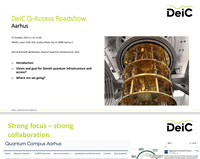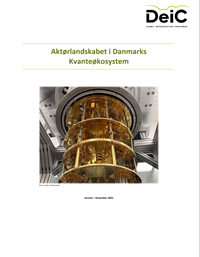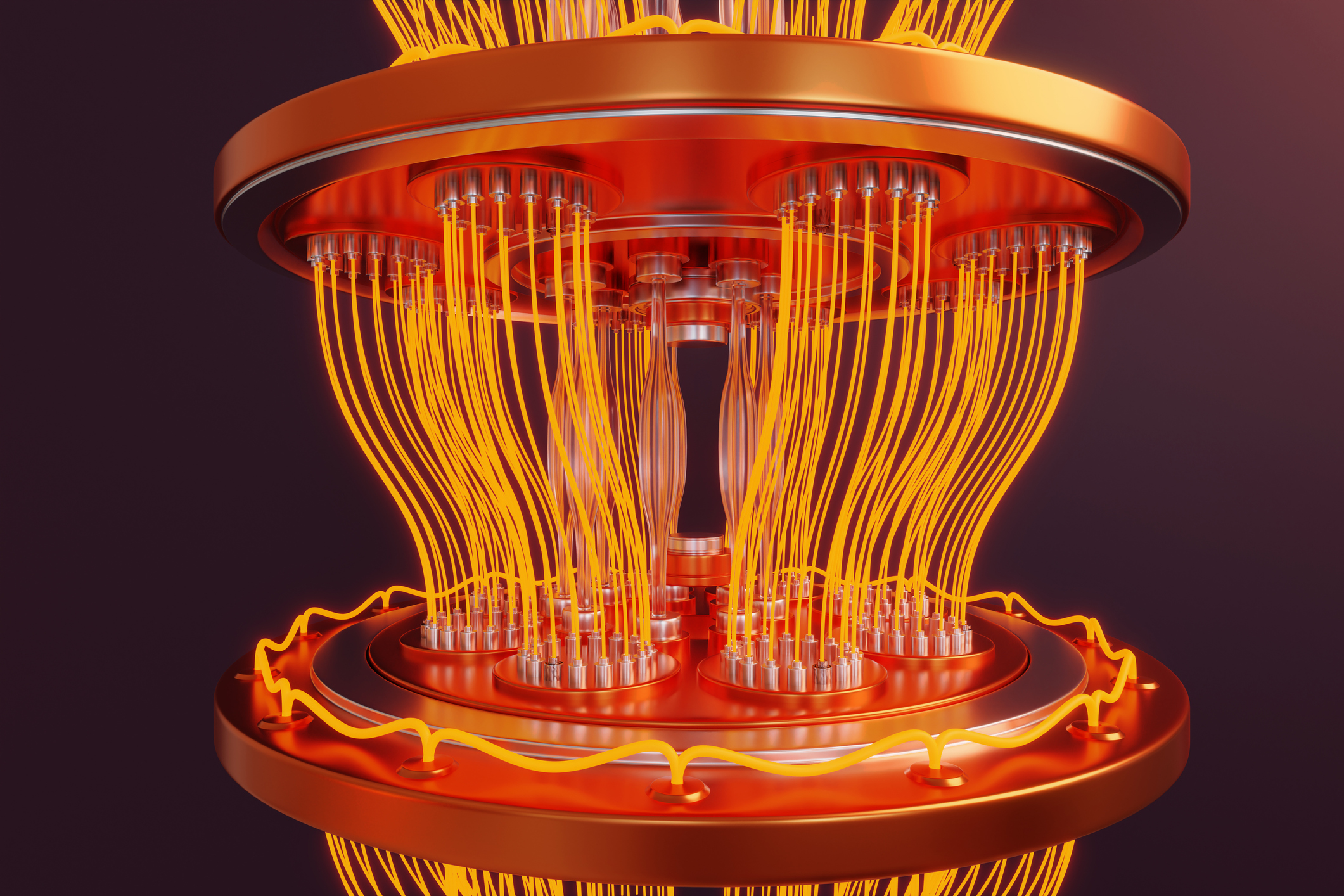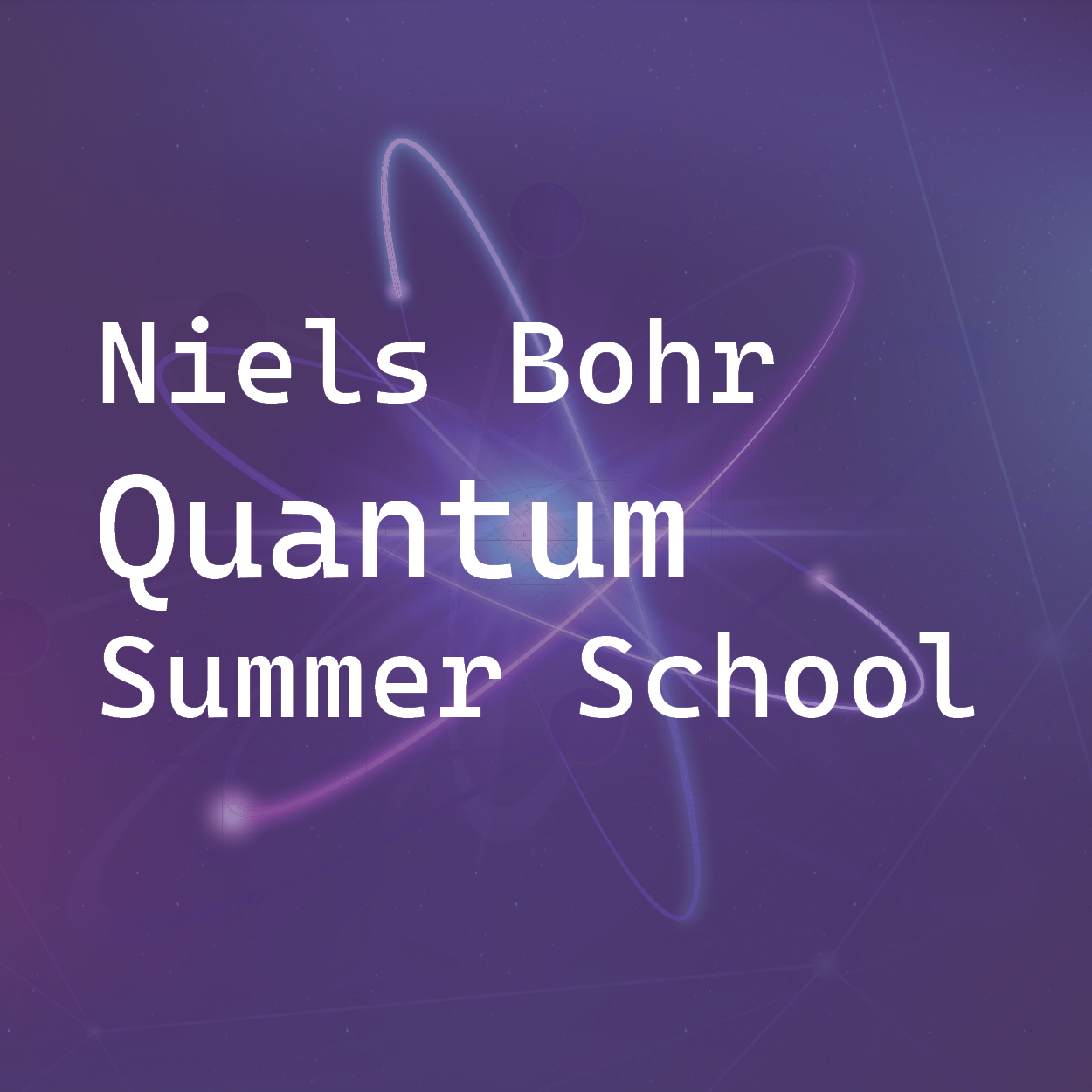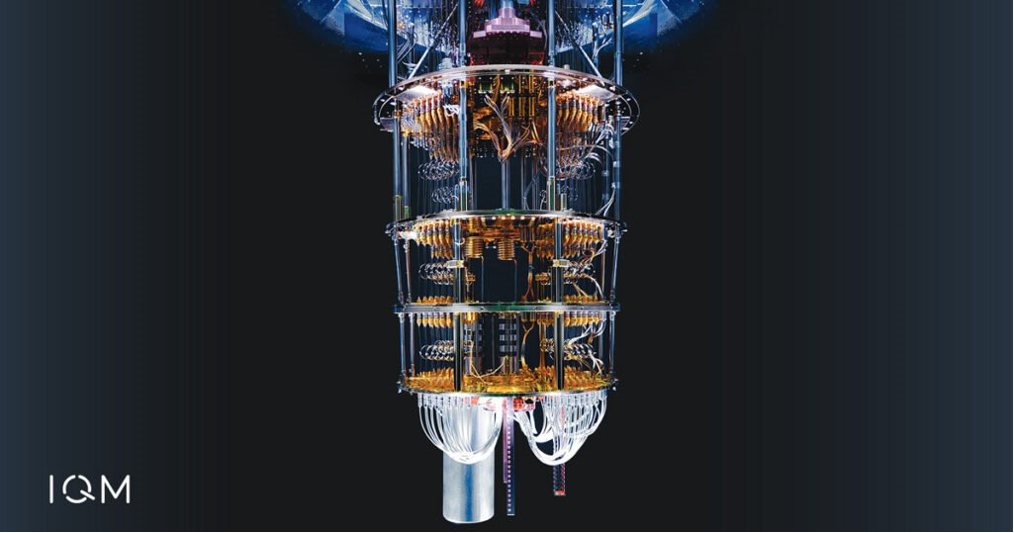Access to Quantum Computers in Denmark and abroad
DeiC provides access to quantum computers and various test and technology platforms for quantum computing, available to universities.
Through Q-Access, users can connect to different production platforms, integrating with learning environments and resources on quantum computers and high-performance computing (HPC) facilities.
Universities can apply through Q-Access for access to both sandbox environments and specific quantum hardware opportunities as well as consult our quantum experts.
Accessing Quantum Computers
To accommodate differentiated access demands to different platforms and varying levels of how close to the actual quantum computing hardware this access should be, DeiC has implemented a two-stage model of providing access to quantum computing resources incl. heavy-duty simulator access on classical HPC systems:
DeiC provides access to the Microsoft Azure Quantum cloud service (via the European OCRE framework) to Danish academia. See the FAQ below for more information on eligibility. This access is intended to allow users to explore and test a variety of quantum platforms.
Through Microsoft Azure Quantum, users have access to a diverse portfolio of quantum simulators and quantum computers from Quantinuum, IonQ, Quantum Circuits Inc., Rigetti, and Pasqal. This access is intended for testing, and so users are encouraged to start with testing the various free simulators before moving on to actual hardware tests. For more significant or specific needs, see the calls below. Fill out a form here to request access to Microsoft Azure Quantum
Access to specific quantum hardware and corresponding hardware-specific simulators for users with specific high-level research needs.
For access to specific quantum hardware and corresponding hardware-specific simulators, please apply via this call:
Call for expression of interest in access to quantum computing resources
The next call will open in the beginning of July 2025.
Advancing Quantum Computing in Denmark with Your Support
This is a pioneering initiative for DeiC and Denmark, which we’re excited to shape and enhance with practical experience. We appreciate your patience and welcome any feedback to help us make it even better!
Share your general inquiries and feedback with us via the Quantum Back Office.
Consulting with Our Quantum Computing Experts
DeiC provides consulting with experts in quantum computing, who can understand your computational needs and provide support for leveraging quantum computing systems relevant to reaching your research goals. These services can be utilized by both universities, industry, and public sector.
Furthermore, these experts can provide advice and share technical expertise on porting and optimizing applications for quantum computing environments and offer guidance on software development as needed. Fill out a form here to consult with our experts in quantum computing
Greyson Potter, Ph.D., is a Quantum Computing Infrastructure Developer at DeiC and a Postdoctoral Researcher at the Centre for Quantum Mathematics, SDU. He has a background in pure mathematics, with a Ph.D. in Mathematics from Boston University focusing on computational aspects of topological recursion and knot invariants. He is currently researching topological quantum computing and quantum algorithms for computing invariants from knot theory and topological quantum field theory.
Muyang Liu, Ph.D., is a Quantum Computing Infrastructure Developer at DeiC and a Postdoctoral Researcher at the Centre for Quantum Mathematics, SDU. She holds a Ph.D. in Physics from the University of Pennsylvania, where her research focused on large-scale data computation in quantum field theory, integrating techniques for reducing data complexity inspired by pure mathematics. Currently, her work extends beyond theoretical foundations into practical applications of quantum technology, aiming to harness the potential of quantum computing for societal benefits.
Point of contact
For general information about Q-Access and the application process, please contact Maria Tammelin Gleerup, project manager of the Q-Access programme, via the general inquiry or feedback form on Quantum Back Office.
Frequently Asked Questions (FAQ)
Danish universities can apply.
For universities, the following conditions apply:
Professors, associate professors, and assistant professors can apply for themselves and also on behalf of post docs, PhDs and master’s thesis students.
To promote the use of quantum resources in all scientific fields, DeiC has pre-reserved 10% of the offered resources for possible applications from the area of social sciences and humanities (SSH). If no qualified applications are received, the resources will be transferred to the overall pool.
For sandbox access in Microsoft Azure Quantum via the simple online request form, you can apply for a resource quota ranging from 10.000 DKK to 25.000 DKK.
If your project needs more credits, you can re-apply.
For access to specific quantum hardware and corresponding hardware-specific simulators via one of the calls for quantum access, there is a pool of 11.000.000 DKK.
First, you must fill out the request form for consulting with experts on quantum computing at DeiC. Then, we will respond to your request via e-mail to answer your questions and gather more information. Finally, if more in-depth follow-up is necessary, we will set up a virtual meeting on Zoom.
We can enter into a dialogue about a wide range of topics, from which areas of your project quantum computing might impact to comparing the various quantum computing hardware providers and quantum simulators. We can direct you to a plethora of resources on the various libraries and programming languages used in the quantum software development and help you better understand the process of transpiling, testing, and optimizing implementations of quantum algorithms.
This is a complex question that depends on each user's specific needs. Microsoft Azure Quantum offers access to a diverse range of quantum hardware providers, each utilizing distinct technologies with its own advantages. Determining the "best" provider depends on specific requirements, such as qubit and gate count, error rates and fidelity required by a given algorithm or application. Additionally, it is crucial to consider compatibility with programming languages and libraries to ensure seamless integration and development.
While we cannot tell you exactly which provider is best for your project, we can help you evaluate the pros and cons of each provider in relation to your project. In addition, we can help you think through questions ranging from compatibility to quota usage and direct you towards the right documentation and resources. Ultimately, our goal is for you to be able to make a well-informed decision.
Microsoft Azure Quantum offers access to various quantum hardware providers and simulators, each with distinct pricing models, which might depend on the number of operations and shots in a job or purely job execution time on the quantum processor, etc. For a more detailed breakdown with specific numbers see the pricing plans for Azure Quantum providers.
Glossary of Common Terms in Quantum Computing
See the glossary of common terms below to better acquaint yourself with the vocabulary used in the quantum technology field and by our experts in quantum computing at DeiC.
Abbreviation of quantum bit, which is the most basic unit of information in a discrete quantum computing system. As compared to a classical bit, a qubit has a probability of being either a 0 or 1, represented by a superposition of the quantum states corresponding to 0 and 1.
Physical Qubit: The two-state physical quantum systems (ranging from photons to ions) located within a quantum processing unit (QPU). For example, the ground state and an excited state of an ion forms a physical qubit with the ground state representing 0 and the excited state representing 1.
Logical Qubit: A high-level abstraction of a qubit, used for fault-tolerant quantum computing, that is composed of multiple physical qubits for error correction.
A quantum information approach where qubits are used, often represented by distinct states like 0 and 1.
A quantum information approach where qumodes are used, involving continuous properties like position and momentum rather than discrete states.
A quantum unit of information similar to a qubit but with more than two possible states.
A quantum unit of information that holds continuous-variable information used in continuous-variable quantum computing and quantum photonics.
A model for computation in which a sequence of quantum gates and measurements are applied to a set of qubits (or qudits or qumodes). Typically, this defines a single execution of a shot on a QPU.
A unitary operation on one or more qubits (or qudits or qumodes). In particular, they are always reversible, as opposed to measurements, and they grow exponentially in the number of qubits. For example, a quantum gate acting on 100 qubits can be represented by a 2100 x 2100 unitary matrix, which is far beyond what a classical computer can deal with.
A machine containing a quantum processing unit (QPU) that can physically realize a set of qubits and execute quantum circuits, to do computations in an entirely different way than classical computers.
For small numbers of qubits, quantum circuits can be simulated effectively, which is used for testing implementations on classical computers. However, since the time to simulate a quantum circuit grows exponentially in the number of qubits, simulators are primarily used for verifying the correctness of implementations and testing proofs of concept.
Utilizing the principles of quantum mechanics, such as superposition and entanglement, allows for entirely new approaches to solving problems. In several examples, such as Shor’s algorithm or Grover’s algorithm, quantum algorithms have been shown to be able to solve problems more efficiently than their classical counterparts.
Advanced
The number of qubits in a quantum circuit (and hence the number of horizontal lines in the circuit diagram). Note that in some cases, classical bits used to control parts of the circuit or read out measurements may be counted toward the width.
A measure of how many “layers” of quantum gates, executed in parallel, it takes to complete the computation defined by the circuit. Because quantum gates take time to implement, the depth of a circuit roughly corresponds to the amount of time it takes to execute the circuit.
The number, possibly broken down by type, of the gates in a circuit. For example, two-qubit gates are typically more difficult to implement than one-qubit gates and so it is often helpful to have counts of each.
The act of extracting one classical bit of data from a qubit (or qudit or qumode). This is an irreversible operation, and destroys entanglement and phase coherence between with the rest of the system.
Superposition of states is a principle in quantum mechanics that describes a system existing in multiple states simultaneously. Mathematically, it is represented by a probability distribution of measuring each of the states, and it is what allows a qubit to represent a combination of 0 and 1 with different probabilities.
The unwanted disturbances (e.g. thermal) that affect quantum systems, leading to errors in quantum computations, and can cause qubits to lose their quantum properties which is a process known as decoherence.
The class of problems that quantum computers can solve efficiently with error probability less than a set bound.
The ability of a quantum computer to approximate any arbitrary quantum computation using a finite set of quantum gates.
A metric that measures the overall power of a quantum computer based on the largest square circuit it can successfully implement.
An algorithm for approximating any quantum gate with a sequence of gates, from a simpler and universal gate set, to arbitrary precision.
The process of converting quantum algorithms into a form that matches the architecture and gate set of a specific quantum computer.
A measure (typically an average) of how accurately a quantum operation or state aligns with the desired outcome.
The ability of a quantum system to perform accurate computations even in the presence of errors.
The duration a qubit can retain its quantum state before losing coherence due to environmental factors.
The time required to perform a single quantum gate operation on a quantum system.
The description of the pairs (or more generally sets) of qubits in a quantum system on which gate operations can be performed; also called the topology of the system.
A quantum phenomenon where two or more particles have interdependent states even when physically separated.
Our Other DeiC Initiatives within Quantum Computing and Related Areas
Q-Algorithm
A Quantum Excellence Center for Development and Testing of Quantum Algorithms
Q-Competence
A national competence-building initiative
LUMI
DeiC participates in the LUMI-Q consortium under EuroHPC, which is working on establishing a quantum computer, operational from first half of 2025.
In this video you can hear a Danish presentation of DeiCs work enabling access to Quantum Computers from Dean Marianne Holmer, The University of Southern Denmark, DeiC board member and chairperson of the Q-Access Working Group.
